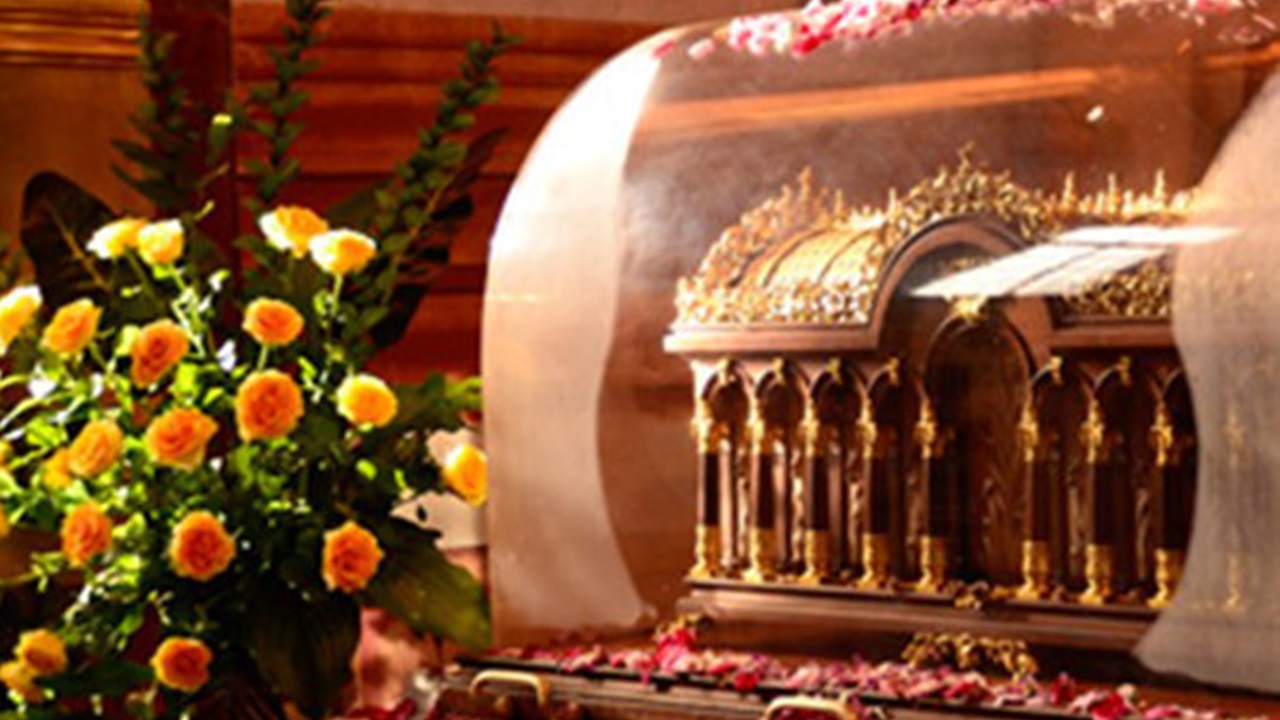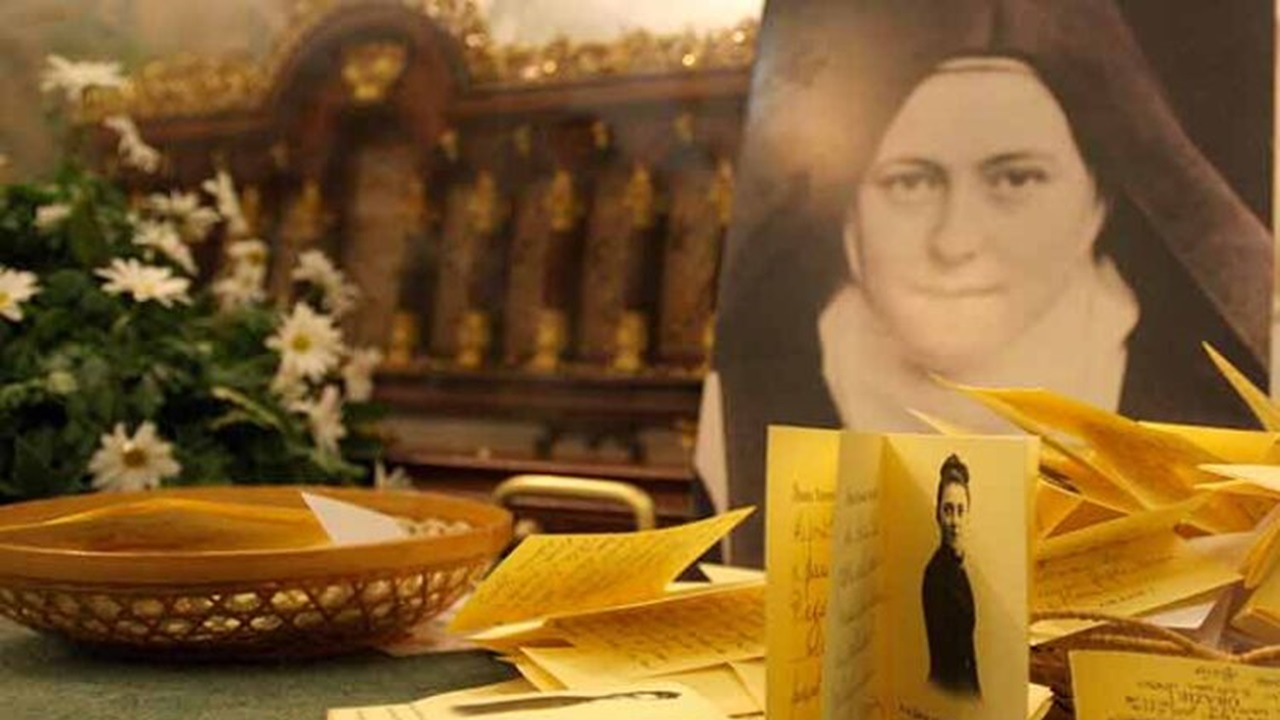The exhumation of the body of Saint Teresa and her relics
After the death of the sisters, in Carmelite monasteries it was customary to write a death announcement and send it to the friends of the monastery. For Santa Teresa, this news was written using the three autobiographical manuscripts that she herself had written. The book entitled “Story of a Soul” was published on 30 September 1898 in 2000 copies.

The readers of "Story of a soul” they began to make pilgrimages to Lisieux to Therese's tomb. A procession of pilgrims went up every day from the station to cemetery on horseback to reach the tomb located on the heights of the city. There were several miracles reported. One of these occurred on May 26, 1908, when a four year old girl, Regina Fouquet, blind since birth, recovered after being carried by her mother to the saint's tomb.
From that moment on, pilgrimages became increasingly numerous and important. They prayed with arms stretched out in a cross, they left letters and photographs, they brought flowers and placed ex-votos as if to testify to the healings that had taken place.

The exhumation of the body of Saint Teresa
Teresa's body came exhumed on 6 September 1910 at the Lisieux cemetery, in the presence of the bishop and hundreds of people. The remains placed in a lead coffin and transferred to another tomb. A second exhumation took place on 9-10 August 1917. On 26 March 1923, the coffin was moved to the chapel of Carmel. Teresa came beatified and canonized May the 17 1925.
Il Pope in Lisieux, 30 September 1925, yes he knelt in front of the half-open reliquary that contained Teresa's body to place a golden rose in the hand of the statue, created by a monk.
But how do you explain this great success that, in just 25 years, made this young girl known to the whole world? Teresa's story is the journey of those who dared to believe in the merciful love of the Father, with all the strength and heart of a very young girl.